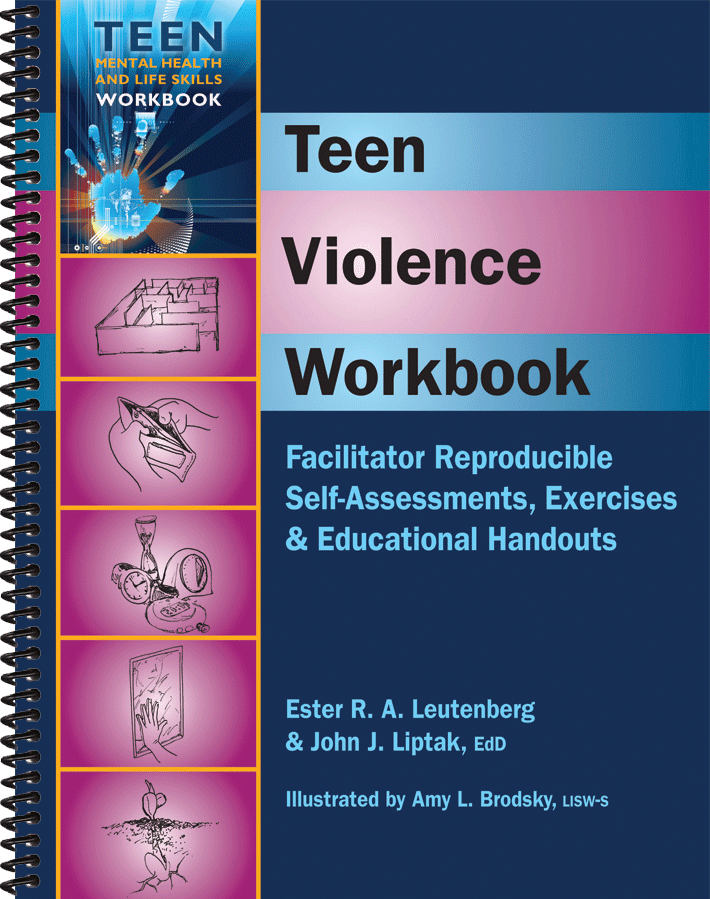*This product may have minor imperfections, such as bent corners, scratches, and scuffs, but is otherwise in good condition.
Teen violence can break out anywhere and at any time. Violent behavior in teens can include a wide range of behaviors, including explosive temper tantrums, date rape, physical aggression, school shootings, suicide, bullying, fighting, threats or attempts to hurt others (including homicidal thoughts), use of weapons, cruelty toward animals, fire setting, and intentional destruction of property.
What are the risk factors?
Violent behavior is experienced on an individual basis, so it is difficult to pinpoint specific risk factors. Signs that suggest violent behavior is imminent include antisocial beliefs and behaviors, use of drugs and alcohol, gang involvement, lack of commitment to school, a victim of teasing or bullying, poor anger management and conflict resolution skills, and interpersonal problems
The question of why teens become violent has been thoroughly researched and studied. Unfortunately, pinpointing the exact causes of teen violence is complex. Some of the potential causes include:
- Teens tend to model behavior – When teens see violence from family members at home, from actors and actresses in the movies, in video games they play, in the form of gangs in their community, from bullies at school, and on the Internet, they often replicate such behaviors. Social Learning Theory suggests that we learn most behaviors through observation and modeling.
- Teens often have difficulty appropriately channeling their frustrations and lash out in anger. These frustrations can include being bullied in school, having a learning disability and not being able to do well in school, feeling pressured by peers to do things they don’t want to do, and experiencing pressure from parents to succeed.
- Teens often become enraged and seek revenge on those who bully or hurt them. Some teens, tired of being bullied or abused, lash out in retaliation.
Over the last century, many different workbooks, workshops, and self-help systems have been developed to help people explore ways of safely dealing with teen violence. In the past twenty years, many research studies have focused on the value of self-reflection and journaling to explore personal characteristics, identify ineffective behaviors, and examine thoughts and feelings that lead to these counterproductive behaviors. This book is unique in combining two powerful psychological tools designed to enhance domestic violence coping skills: self-assessment and journaling.
The Teen Violence Workbook contains five separate sections that will help participants learn more about themselves and the impact of dating relationships and violence in their lives. Participants will develop an awareness of the violence they are exposed to daily. They will complete assessments and activities to help them explore the violence in their lives and develop strategies for coping with violence.
The sections in the book are:
Types of Violence Scale helps individuals explore the kinds of abuse they are experiencing in their relationships. These teen violence types include sexual abuse, physical abuse, verbal/emotional abuse, and financial abuse.
Self-Empowerment Signs Scale helps individuals explore whether they are empowered to avoid or reject violent acts.
Dating Violence Scale helps individuals identify if they or their relationship partners possess harmful beliefs about dating relationships.
Personal Safety Scale helps individuals examine how cautious they are being to remain safe in a violent society.
Symptoms of Dating Violence Scale helps individuals explore the signs of violence and determine if they are experiencing violence in their life.
This book is a practical tool for helping professionals, such as therapists, school counselors, psychologists, guidance counselors, teachers, and group leaders. Depending on the role of the professional using the Teen Violence Workbook and the specific group’s needs, these sections can be used individually or combined for a more comprehensive approach.

